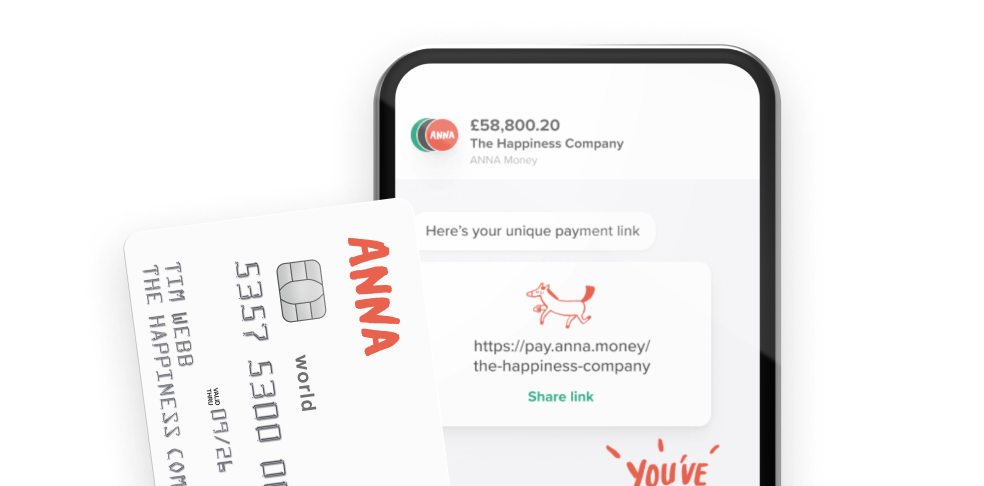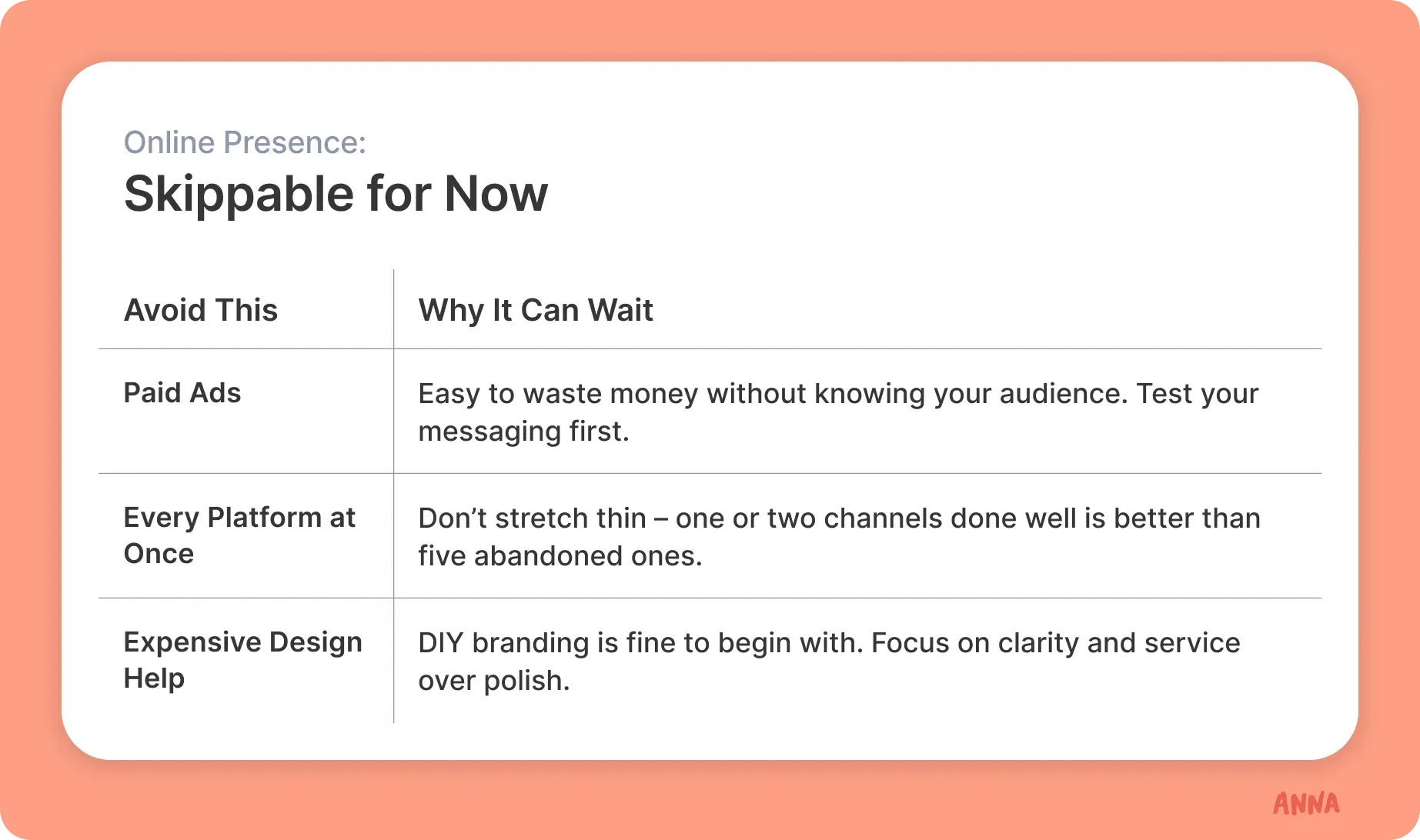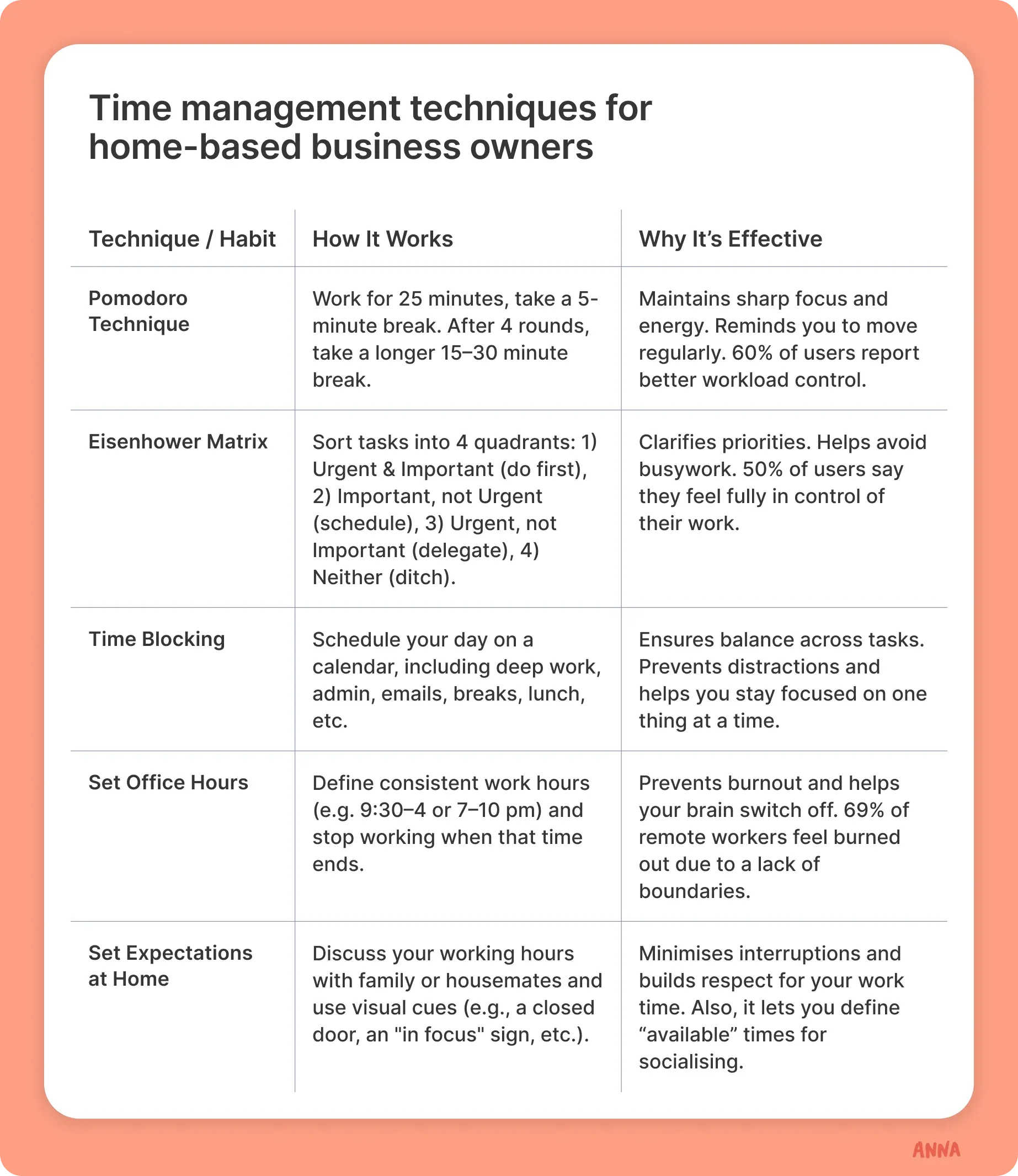Learn how to run a business from home with practical steps to stay compliant, attract customers, and grow confidently from your own space.


- In this article
- Why set up a small business at home?
- Step 1: Identify a home-compatible business idea
- Step 2: Conduct market research from home
- Step 3: Develop a simplified business plan
- Step 4: Handle the legal stuff and zoning rules
- Step 5: Set up a dedicated workspace
- Step 6: Manage your finances and budget
- Step 7: Build your online presence
- Step 8: Organise and streamline your home-based operations
- Step 9: Plan for growth (on your terms)
- Step 10: Launch your business
Ready to launch your home-based business? You don’t need a fancy office to start something real. In fact, around 70% of new UK businesses begin at home.
This guide covers how to set up a home-based business that’s legitimate, focused, and built to grow – all starting from exactly where you are now.
Why set up a small business at home?
1️⃣ Lower startup costs
You avoid office rent, commute, and extra utilities. Most home-based businesses launch for under £5,000 and often far less. A basic setup at home costs a fraction of what you'd spend on an office.
2️⃣ Remote is the norm
Running your business from home doesn’t make you look unprofessional. Clients care about results, not where you’re working. You can serve customers from anywhere, without the overhead.
3️⃣ Built-in flexibility
Home businesses let you set your own schedule and design your space. It's ideal for parents, caregivers, or anyone balancing work and life.
4️⃣ Professionalism is online now
Credibility doesn’t come from having an office. If you have a solid online presence and deliver great service, no one minds that you’re working from a spare room.
Step 1: Identify a home-compatible business idea
Not every business works well from home, but plenty do. The key is choosing something that fits your skills, suits your space, and doesn’t require a full storefront or on-site staff.
Here are a few home-friendly ideas to get the wheels turning:
- Virtual assistant or bookkeeper: Ideal if you’re highly organised or great with admin. Services like inbox management, scheduling, data entry, or bookkeeping can all be done remotely for clients.
- Handmade crafts or products: Perfect if you’re creative and don’t mind a bit of storage. Whether it’s artisanal jewellery, candles, custom t-shirts, or homemade baked goods, many craft businesses start in home studios.
- Freelance writing or design: There’s constant demand for blog writers, social media content creators, web designers, etc., and you can do all the work from your computer at home.
- Online tutoring or coaching: From tutoring GCSE/A-level students via Zoom to offering business coaching or fitness training online, you can teach from home with just a webcam.
- Consulting or professional services: Many consultants (marketing, HR, IT, you name it) operate primarily from home, visiting client offices only when needed.
Step 2: Conduct market research from home
Now that you’ve got a promising business idea, these free tools and tactics can help you validate it without spending a penny:
1️⃣ Google Trends
Search your main keyword (e.g. “vegan skincare”) to see if interest is growing, steady, or declining in the UK. You can compare related terms, such as “cruelty-free skincare,” and explore seasonal trends. If interest is rising, great. If not, consider narrowing your niche or pivoting.
2️⃣ AnswerThePublic
Enter a keyword and discover real questions people are asking. For example, typing “custom jewellery” brings up queries like “How much does it cost?” or “Where to find unique rings?” This shows you what people care about and the language they use.
3️⃣ Reddit, Facebook groups, and forums
Join relevant online spaces and observe the conversations. A Reddit thread on “phone cases” might reveal comments like “Everything’s made for iPhones – I want cute Android options.” These insights highlight demand gaps and give you exact phrases your audience uses.
4️⃣ Etsy and Amazon reviews
Planning to sell a product? Study reviews of similar bestsellers. Customers often mention what they love and what’s missing (e.g. “Smells great but burns too quickly”). Use this feedback to refine your candle offer or packaging.
5️⃣ Social media polls
Run a quick poll on Instagram Stories, Twitter, or LinkedIn. Ask things like “Would you pay for this?” or “Which product would you choose?” Even a few responses can point you in the right direction, and people love giving opinions.

Step 3: Develop a simplified business plan
Even home businesses require some planning. Jot down these elements:
- Business idea: What are you offering, what problem are you solving, and why now? (e.g. “I offer virtual bookkeeping for local businesses to help them stay compliant with Making Tax Digital.”)
- Target market: Who are your ideal customers? (e.g. “Busy restaurant owners in my area without in-house accountants.”)
- What makes you different: What sets your offer apart? Is it faster, more affordable, more personal, or higher quality?
- Goals: Set 1 - 3 clear targets for the next 3, 6, and 12 months. (e.g. “First paying client by Month 3”, “£1,000/month by Month 6”.)
- Marketing: Pick 2 - 3 ways you’ll get the word out – social media, SEO, local networking, or online communities. Just rough ideas for now.
- What you’ll need: List any tools, equipment, or software to deliver your product or service from home.
- Business setup: Decide if you’ll be a sole trader or a limited company. Note any licenses, permits, or administrative tasks, such as opening a business account.
- Basic financials: Estimate startup costs, income goals, pricing, and monthly expenses. Even a rough budget helps you stay realistic and plan ahead.
Step 4: Handle the legal stuff and zoning rules
1. Choose a business structure
In the UK, the two most common setups for a one-person business are:
- Sole trader: Easiest route – you don’t need to register a company with Companies House. You simply are the business. You’ll need to register as self-employed with HM Revenue & Customs (HMRC) and file an annual Self Assessment tax return for your business income. Sole trader setup has minimal paperwork, but note that you and the business are legally the same – there’s no separation of personal and business liabilities.
- Limited company (Ltd): You’ll need to register the company with Companies House and file annual accounts and returns. It’s a bit more paperwork (and usually some accounting help needed), but it can be worth it if you want that separation or plan to scale up and maybe hire employees.
2. Register your business name
- If you’re using a business name different from your own name, as a sole trader, you don’t have to register the name officially (just avoid using a name that’s trademarked by someone else).
- If you set up a limited company, the name gets registered as part of that process (you can search Companies House to see if your desired name is available).
Also, consider buying the domain name for your business (yourbusinessname.co.uk) to secure your online identity.
💡With ANNA, you can register a Limited Company for free and open a business account at the same time. It’s fast, simple, and doesn’t cost a thing.
Use the free name checker to see if your business name is available and get instant suggestions if it’s not.
3. Understand home business regulations and zoning
Good news: the UK has become quite supportive of home-based businesses. In fact, the government introduced measures to make it easier.
- Running a business from a rented home is generally allowed now, and landlords are assured it won’t violate typical tenancy agreements.
- Planning permission is usually not needed to work from home as long as your home remains primarily a residence (i.e. you’re not causing disturbances, significant foot traffic, or making structural changes).
- And in most cases, home-based businesses won’t incur business rates (extra property taxes) unless you’ve dedicated part of your home exclusively to business use in a way that changes its classification.
That said, check your lease or housing contract if you rent – some have clauses about running a business.
If you own your home, check if your mortgage or property deeds have any restrictions (rare for typical home working, but worth noting if, say, you plan to regularly receive customers at home).
Also, consider local council regulations depending on your business type.
- If you’re starting a home baking or food business, you’ll need to register with your local council’s environmental health department (for food safety inspections) and possibly get a hygiene rating.
- If you plan to see clients at home (like a home hairdresser or therapist), check if you need any permits or if parking will be an issue in your neighbourhood.
- And if you’re doing any sort of manufacturing or using equipment that might cause noise/smells (e.g. woodworking, soapmaking), be mindful of environmental health rules and your neighbours.
4. Handle the tax IDs and licenses
Make sure to:
1. Register with HMRC
If you’re a sole trader, register for self-assessment (you’ll get a Unique Taxpayer Reference). If you form a company, you’ll register with Companies House and HMRC will issue a Corporation Tax UTR. Either way, you need to be on record once you start trading so that you can pay the right taxes. Or, let ANNA handle that.
With ANNA, there’s no need for separate accounting software. Your transactions, invoices, and receipts are automatically tracked, categorised, and calculated. No complicated tools to learn – ANNA handles your taxes for you, hassle-free.
2. Apply for any necessary licenses/permits
Aside from local council considerations, some businesses need specific licenses. Examples: childminders (home daycare) need to register with Ofsted, businesses involving personal data might need ICO registration, and selling crafts with certain materials might require compliance with safety standards (toys, cosmetics, etc.).
3. Insurance
At a minimum, if customers or suppliers visit your home, public liability insurance is wise. Professional indemnity insurance is important for consultants or advisors.
If you’re selling products, product liability insurance covers you if a product causes harm.
And check your home insurance – inform them you’re running a home business (it might not affect your premium if it’s low-risk, but not telling them could invalidate a claim).
Step 5: Set up a dedicated workspace
Yes, technically you can work from the kitchen table or the sofa with a laptop on your knee. But should you? Probably not, at least not in the long term.
A good setup helps you stay focused, comfortable, and productive. Here’s what you need:
✔ Comfortable chair: Invest in a chair with proper back support. It’s worth it.
✔ Desk or table at the right height: Your elbows should sit at 90° when typing. A laptop stand (or books) can help bring your screen to eye level.
✔ Good lighting: Natural light is best, but a bright desk lamp helps reduce eye strain and screen glare.
✔ Reliable internet: Make sure your connection is strong. If Wi-Fi’s spotty, use a booster or plug in with ethernet.
✔ Quiet space: Pick a low-distraction spot. Use noise-cancelling headphones or set boundaries with others at home to protect focus time.
Step 6: Manage your finances and budget
Money management isn’t the most thrilling part of entrepreneurship, but it’s absolutely essential, especially when you’re a one-person finance department.
1️⃣ Separate business and personal finances
Open a dedicated business bank account from the start, even if you’re a sole trader. It’s not legally required, but it makes life much easier. You’ll be able to track your business income and expenses clearly without digging through personal transactions later.
2️⃣ Track everything from day one
Use a spreadsheet or accounting tool like ANNA to log all income and expenses. The key is to get into the habit early so nothing slips through the cracks.
3️⃣ Build a basic budget
Go back to the rough numbers you worked out in Step 3. Refine your startup costs and list your monthly expenses, including items such as internet, software, packaging, and advertising. Then set income goals to cover those and pay yourself.
➸ Example: If you spend £200/month on business costs and need £800/month for living expenses, aim to bring in at least £1,000/month in revenue.
4️⃣ Plan for taxes and insurance
As a business owner, it’s up to you to set aside money for taxes. A good rule is to save 20-30% of your profit for income tax and National Insurance. If you’re likely to hit the £90,000 VAT threshold, you’ll need to register for VAT too.
Also, think about insurance – public liability or professional indemnity may be worth adding to your budget depending on what you do.
5️⃣ Save your receipts and records
In the UK, you need to keep business financial records for at least five years. Whether you go digital or paper-based, start saving receipts for all purchases now.
ANNA let you snap photos of receipts and organise them for you. This makes tax filing easier and you might uncover extra deductions like a portion of your internet bill or home office costs.
Step 7: Build your online presence
You don’t need to “go viral” or have a huge following to be successful. You just need to make sure that when people search for you (or stumble upon you), they find something professional and informative. Let’s break this into levels of priority:


Step 8: Organise and streamline your home-based operations
Without some structure, it’s easy to either drift (hello, Netflix) or overwork until you burn out because work and home boundaries blur. Let’s talk about staying efficient and sane:
Get the right tools to stay organised
A few well-chosen apps or systems can save you tons of time and prevent things from falling through the cracks.
- Capsule CRM is a popular lightweight CRM that’s actually UK-based – it lets you manage contacts, track sales opportunities, and set follow-up reminders all in one place (it even has a free trial, so worth a go).
- Use a proper accounting/bookkeeping app if you can (ANNA, Wave, QuickBooks, Xero, etc.) to log invoices and expenses – it will make your life easier (and impress clients with professional invoices).
- If your business involves appointments (consultations, tutoring sessions, etc.), look into an online scheduling tool (like Calendly or Acuity) to avoid endless email ping-pong arranging times.
- If you collaborate with others or just have multiple devices, a good cloud storage (Google Drive, Dropbox, OneDrive) keeps your documents accessible and synced.
Master time management techniques
Working from home, you might discover the days can evaporate if you’re not careful – or conversely, you might work from dawn till midnight without breaks because there’s no office closing time. Finding a rhythm is key.

Step 9: Plan for growth (on your terms)
Not every home business aims to become the next Amazon and that’s perfectly fine. What matters is growing in a way that fits your goals and lifestyle.
Do you want a full-time income, eventually hire others, or stay small but profitable from home?
If you do plan to grow:
- Document your processes: Keep simple checklists or notes on how you do things. It’ll save time when you’re ready to delegate.
- Use scalable tools: Choose software that can grow with you, like email platforms or order management tools, to avoid bottlenecks later.
- Try small-scale outsourcing: You don’t need full-time staff. Start with freelancers or part-time help for admin, bookkeeping, or marketing. Focus on what only you can do, and gradually hand off the rest.

Step 10: Launch your business
You’ve done the prep – now make it official. This is the shift from “I’m planning” to “I’m open.” Don’t wait for perfection. You can’t get your first customer until you go live.
✅ Quick launch checklist
✔ Offer ready: You know what you're selling, the price, and how people can buy. Keep it simple to start.
✔ Essentials sorted: You’ve registered (or started), set up a business account, and can take payments via PayPal, Stripe, or a basic site.
✔ Online presence live: Your website or profile is public, links work, and listings are active.
✔ You’ve told people: Post or email your network. A friendly launch message can help you get those first few sales.
 Ready to get started? Set up your home-based business today
Ready to get started? Set up your home-based business today
Once you’ve sorted your business idea, workspace setup, and any legal or insurance requirements, it’s time to make things official.
ANNA makes this super simple.
You can register your company and open a business account at the same time – perfect if you're working from home and want to keep admin to a minimum.
You'll get instant access to the tools you need to run your business smoothly from day one, including invoicing, card payments, expense tracking, and tax support.
Why ANNA works so well for home-based businesses:
1️⃣ Free company registration: Register your limited company without paying extra fees.
2️⃣ Business account set up in minutes: You’ll get a virtual card right away and a physical card delivered to your home.
3️⃣ Easy invoicing from your phone: Send quotes and invoices straight from the app, ideal for freelancers and small business owners.
4️⃣ Snap receipts, sort expenses: Take a photo of your receipts and ANNA organises them automatically to keep your books clean.
5️⃣ Smart tax tools (+Taxes add-on): Handle VAT, PAYE, and Corporation Tax, even without hiring an accountant.
6️⃣ Tax pots that do the saving for you: Set aside a percentage each time you get paid, so your tax bill won’t catch you off guard.
7️⃣ Optional extras when you need them: Add services like confirmation statement filing, PAYE setup, and a virtual business address.
Running a business from home doesn’t mean doing everything alone. With ANNA, you’ve got the tools to stay on top of your finances, keep HMRC happy, and focus on growing what you love.
Read the latest updates
You may also like
Open a business account in minutes




![How to Start a Currency Exchange Business in the UK [Guide]](https://storage.googleapis.com/anna-website-cms-prod/medium_Cover_3000_Landscaping_Business_Names_Creative_Name_Ideas_daad2f9e2a/medium_Cover_3000_Landscaping_Business_Names_Creative_Name_Ideas_daad2f9e2a.webp)




![140 Creative Tutoring Business Names [Ideas & Examples]](https://storage.googleapis.com/anna-website-cms-prod/medium_Cover_3000_Landscaping_Business_Names_Creative_Name_Ideas_d7964059b3/medium_Cover_3000_Landscaping_Business_Names_Creative_Name_Ideas_d7964059b3.webp)

![How to Start a Self-Employed Business in the UK [Guide]](https://storage.googleapis.com/anna-website-cms-prod/medium_Cover_3000_Landscaping_Business_Names_Creative_Name_Ideas_fe5b6edef1/medium_Cover_3000_Landscaping_Business_Names_Creative_Name_Ideas_fe5b6edef1.webp)
![How to Start an Electrician Business in the UK [Guide]](https://storage.googleapis.com/anna-website-cms-prod/medium_Cover_3000_How_to_Start_a_Car_Detailing_Business_Successfully_74488a6268/medium_Cover_3000_How_to_Start_a_Car_Detailing_Business_Successfully_74488a6268.webp)


![How to Start a Hoodie Business in 2026 [Full Guide]](https://storage.googleapis.com/anna-website-cms-prod/medium_Cover_3000_How_to_Start_a_Hoodie_Business_in_2025_Guide_17060b578d/medium_Cover_3000_How_to_Start_a_Hoodie_Business_in_2025_Guide_17060b578d.webp)
![How to Start a Bakery Business in the UK [2026 Guide]](https://storage.googleapis.com/anna-website-cms-prod/medium_Cover_3000_How_to_Start_a_Copywriting_Business_from_Scratch_e47ea6b2a6/medium_Cover_3000_How_to_Start_a_Copywriting_Business_from_Scratch_e47ea6b2a6.webp)

![How to Start a Copywriting Business from Scratch? [Guide]](https://storage.googleapis.com/anna-website-cms-prod/medium_Cover_3000_How_to_Start_a_Copywriting_Business_from_Scratch_cf3c4d7190/medium_Cover_3000_How_to_Start_a_Copywriting_Business_from_Scratch_cf3c4d7190.webp)

![How to Start a Graphic Design Business in 2026 [Full Guide]](https://storage.googleapis.com/anna-website-cms-prod/medium_Cover_3000_How_to_Start_a_Graphic_Design_Business_in_2025_d8d412cdf5/medium_Cover_3000_How_to_Start_a_Graphic_Design_Business_in_2025_d8d412cdf5.webp)
![How to Start a Video Editing Business in 2026 [Full Guide]](https://storage.googleapis.com/anna-website-cms-prod/medium_Cover_3000_How_to_Start_a_Video_Editing_Business_in_2025_bf1c6865ee/medium_Cover_3000_How_to_Start_a_Video_Editing_Business_in_2025_bf1c6865ee.webp)


![How to Start a Landscaping Business [Step-by-Step UK Plan]](https://storage.googleapis.com/anna-website-cms-prod/medium_Cover_3000_How_to_Start_a_Business_O_Co_Step_by_Step_UK_Plan_6d12203412/medium_Cover_3000_How_to_Start_a_Business_O_Co_Step_by_Step_UK_Plan_6d12203412.webp)
![7 Tips to Start a Perfume Business [Step-by-step Guide]](https://storage.googleapis.com/anna-website-cms-prod/medium_cover_3000_d39376141d/medium_cover_3000_d39376141d.webp)
